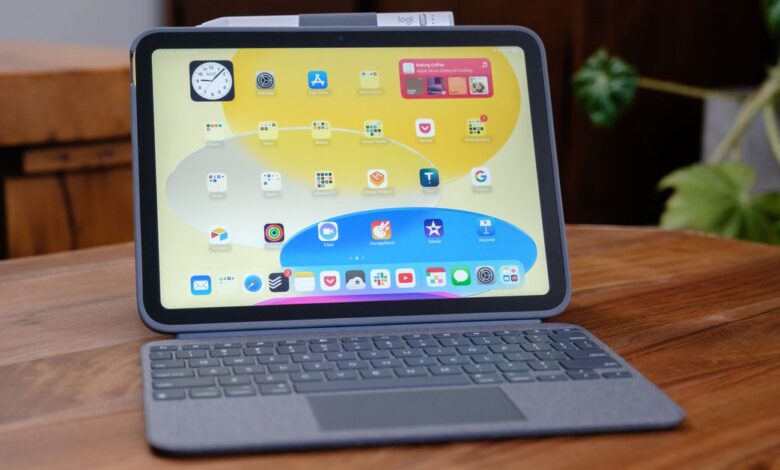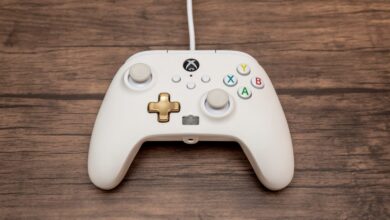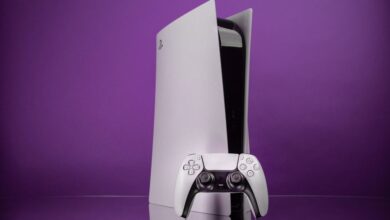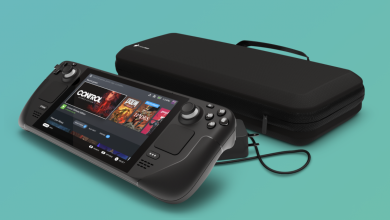Logitech Combo Touch and Crayon for Apple iPad (10th gen) review

[ad_1]
Apple’s 10th-gen iPad is a bit of an enigma, a mix of newer design and technology with older features and limitations. Nowhere is this more apparent than with the accessory situation, where the 10th-gen iPad uses Apple’s older Pencil instead of the model used with the iPad Air, iPad Mini, and iPad Pro and the bafflingly expensive and limited Magic Keyboard Folio.
Fortunately, where there are frustrations, there are opportunities, and Logitech has swooped in to grab them. The company has released a Crayon stylus and Combo Touch keyboard case for the 10th-gen iPad that manage to do a better job than Apple’s devices while costing considerably less money to boot.
Logitech Crayon vs. Apple Pencil (first gen)
Starting with the stylus, Logitech’s $69.99 Crayon costs $30 less than the Apple Pencil and avoids the awkward charging and pairing situation Apple cornered itself into. While the first-gen Apple Pencil has a lightning connector, necessitating the use of a silly $9 adapter to pair and charge with the 10th-gen iPad, the Crayon has a USB-C port built in, which makes it easy to connect to the tablet using the cable that comes with it. You can also charge it using any standard USB-C cable. Plus, there’s a power switch and battery meter right on the stylus itself, neither of which is found on the Pencil.
The Crayon’s flat, carpenter-pencil design prevents it from rolling off a desk, which the round Apple Pencil is prone to do, and its matte aluminum finish is far less slippery than the glossy white plastic on the Pencil. The unorthodox shape does take some getting used to, but between the matte finish and wider barrel, it’s more comfortable for me to hold than the Pencil once I got accustomed to it.
Writing with the Crayon is just as smooth and lag-free as the Pencil, though it lacks the pressure sensitivity found on Apple’s stylus. (It does support tilt for varying line width, though.) Pressure sensitivity is really only important for serious artists — I’ve had no trouble using the Crayon for my hand-written notes in Apple Notes, even though I typically use a second-gen Pencil with an iPad Pro — and if you are a heavy stylus user looking to make digital art, the 10th-gen iPad isn’t likely the iPad for you. (Get one that supports the second-gen Apple Pencil — you’ll be much happier.) For those just testing the waters of digital art, the Crayon is more than capable.
There are a few things I wish Logitech went even further with. Neither the first-gen Apple Pencil nor the Crayon provides an easy way to switch between writing and erasing, like the second-gen Apple Pencil’s double-tap gesture offers. There’s also no way to store the Crayon with the iPad without an additional accessory, a problem the first-gen Pencil suffers from as well. But Logitech does address this with its Combo Touch keyboard case, while Apple ignores it entirely. The Crayon’s writing tip is just as hard and plastic-feeling as Apple’s Pencil and can feel slippery on the iPad’s glass. A matte screen protector goes a long way to improve the writing feel of both styli since there aren’t softer nib options for either.
Ultimately, I can’t think of a good reason to buy the first-gen Apple Pencil over the Logitech Crayon if you have a 10th-gen iPad. It’s easier to hold, easier to pair and charge, and cheaper while providing a very similar writing experience.
Logitech Combo Touch vs. Apple Magic Keyboard Folio
In a similar vein, Logitech’s $159.99 Combo Touch keyboard folio beats Apple’s Magic Keyboard Folio in a number of significant ways at a $90 lower price. Both cases use a two-piece design, with a kickstand for the tablet and a detachable keyboard that you can remove whenever you don’t want to use it. But Logitech’s keyboard has nicer features, its case provides much more protection than Apple’s, and the kickstand offers a much wider range of usable angles. As a bonus, the Combo Touch has a built-in loop to hold either Logitech’s own Crayon stylus or Apple’s Pencil. The Magic Keyboard Folio offers no such feature, leaving you to store the stylus separate from your tablet.
The most obvious difference between Logitech’s product and Apple’s, apart from the price, is that the case part that attaches to the iPad has a rubber frame around all sides of the tablet, with a little piece cut out for access to the Touch ID sensor in the power button. This provides much better protection from knocks and drops than Apple’s case, which magnetically attaches to the back of the iPad and doesn’t protect the sides at all. While the Magic Keyboard Folio is easier to put on and remove, which might appeal to those who switch cases often, for most people, the added protection of the Combo Touch is a better option.
Even though it has more protection than Apple’s option, the Combo Touch is only slightly thicker when all closed up than the Magic Keyboard Folio, something you won’t notice in day-to-day use. It’s also slightly lighter than the Magic Keyboard Folio, whether you have the keyboard attached or not. Logitech’s kickstand design provides a much wider range of motion than Apple’s, allowing you to prop it up at lower angles for writing or drawing. Apple’s case only comes in white, with a soft-touch finish that attracts dust and grime like a magnet. Logitech’s has a gray, fabric-like texture that’s nicer to hold and much easier to keep clean than Apple’s.
1/8
The Combo Touch’s keyboard is very similar to Apple’s in terms of size and layout, with a well-spaced keyboard and responsive trackpad. The keys have nice feedback and travel and are backlit, which isn’t available on the Magic Keyboard Folio. Logitech’s row of function keys is slightly different than Apple’s, swapping the lock button for a screenshot key and trading the Do Not Disturb and App Library keys for the backlight controls. Neither change is a deal breaker, and I kind of like having the one-key screenshot button instead of the Do Not Disturb key I’ll never use.
The keyboard attaches to the bottom of the Combo Touch using pogo pins, just like Apple’s, and doesn’t require any pairing or charging. One trick the Magic Keyboard Folio does that the Combo Touch can’t is let you fold the keyboard back behind the tablet when it’s not in use — you really have to remove the keyboard entirely when you want to use the iPad as a tablet if you have the Combo Touch. But on the plus side, the Combo Touch is much more secure and solid when the keyboard is closed and doesn’t awkwardly slide around like Apple’s keyboard. It’s overall just a much better case for the iPad.
It’s a bit surprising to see third-party accessories so soundly trounce Apple’s first-party options, but in the case of the 10th-gen iPad, that’s exactly what’s happened. Logitech’s stylus and keyboard case are better designed, have more features, and cost less than Apple’s equivalents. It’s a no-brainer recommendation.
Photography by Dan Seifert / The Verge
Correction, December 20th, 11:45AM ET: An earlier version of this article stated that the Logitech Crayon lacked support for both pressure and tilt — it in fact does support tilting the tip to vary line width. We regret the error.
[ad_2]
Source link






